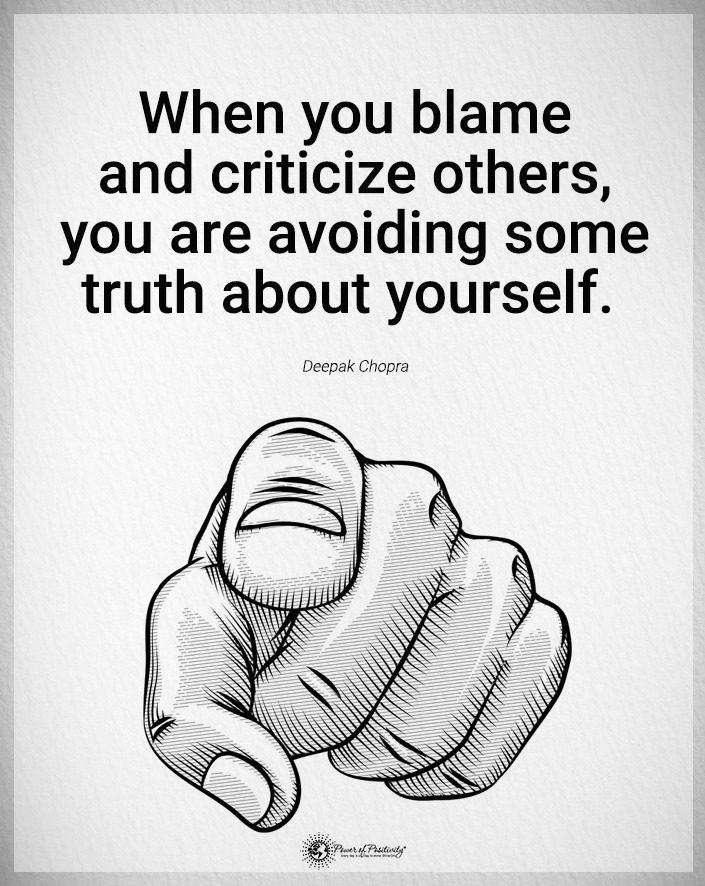Watch for these words that reveal passive-aggression.
Have you ever been in a situation where someone’s words didn’t quite match the tone they used or the context they were in? You may have encountered phrases that left you uneasy, even though they sounded polite. That confusing response is passive-aggressive behavior. Passive aggression is a negative form of communication where individuals express negative feelings indirectly ra
ther than openly discussing them.
In this article, we’ll explore fifteen phrases that commonly reveal passive-aggressive behavior, helping you navigate these tricky interactions with greater awareness and understanding.
Understanding the Key Causes Passive Aggressive Behaviors
Before diving into the phrases, let’s take a moment to understand passive aggressiveness. What causes people to develop this negative communication style to cope with others?
Passive aggression, as perplexing and frustrating as it can be, doesn’t arise in a vacuum. It’s often the result of underlying issues. These can be either personal or situational – of a mix of the two. Understanding these causes is crucial for effectively addressing and mitigating passive-aggressive behaviors in our interactions. Here’s a look at the factors contributing to passive aggression development.

Childhood Experiences and Family Dynamics
The foundation of passive-aggressive behavior often lies in one’s upbringing. Children who grow up in environments where direct expression of anger or frustration is discouraged or punished may learn to communicate these feelings indirectly. Similarly, if caregivers model passive-aggressive behavior, children might adopt this as a normal way of handling conflicts.
Cultural and Social Influences
Cultural norms play a significant role in shaping our communication styles. In some cultures, confrontation is viewed negatively, leading individuals to express discontent subtly. Social expectations, such as the emphasis on being polite or non-confrontational, can also encourage passive-aggressive communication.
Fear of Confrontation or Rejection
One of the most common reasons for passive aggression is a fear of a direct confrontation. People may fear the consequences of openly expressing their anger or disagreement, such as damaging relationships or facing rejection. This fear can lead them to express their feelings indirectly to avoid conflict.
Feelings of Powerlessness
Passive aggression can stem from feelings of powerlessness or helplessness in a situation. When individuals feel they don’t have a voice or their opinions are consistently disregarded, they might resort to passive-aggressive behavior to exert some control or express their frustration.
Lack of Communication Skills
Sometimes, passive aggression is simply the result of inadequate communication skills. Individuals might not know how to express their feelings effectively and respectfully, leading them to adopt a passive-aggressive style as a default mechanism.
Resentment and Unresolved Issues
Harboring unresolved anger or resentment towards someone can lead to passive-aggressive behavior. When these negative feelings are not addressed openly, they can manifest indirectly. These might look like sarcasm or backhanded compliments. Conversely, they could be actions, not words – such as simply ignoring someone.
Individuals with low self-esteem might use passive aggression as a defense mechanism. By avoiding confrontation, they protect themselves from potential criticism or judgment, which they may perceive as a threat to their self-worth.
15 Phrases That Reveal Hidden Passive Aggressive Behaviors
As you read each phrase often used by passive-aggressive people, note that we included a sample response to disarm them with positivity and kindness.
Phrase 1: “Fine, Whatever”
This phrase is a classic example of passive aggressiveness. It’s often used to end an argument or discussion, but the tone and context suggest that the speaker is far from fine. It indicates resignation but it also reveals hidden frustration or disagreement.
Response: “I sense there might be more on your mind. I’m here to listen if there’s something you’d like to discuss.”
Phrase 2: “I’m Not Mad”
It’s a sign of passive aggression when someone insists they’re not mad, especially when their tone or behavior suggests otherwise. This phrase often comes up when someone is trying to mask their true feelings of annoyance or anger.
Response: “I appreciate you saying that. If there’s anything bothering you, though, I’m open to talking about it.”
Phrase 3: “I Was Only Joking”
Humor can be a tool for passive aggressiveness, especially when it’s used to mask criticism or contempt. If someone often follows up a harsh or critical comment with “I was only joking,” they may be expressing negativity in a veiled manner.
Response: “I understand you meant it as a joke, but it came across a bit differently. Can we talk about what you meant?”
Phrase 4: “No, Go Ahead, You Obviously Know Better”
This phrase is dripping with sarcasm, a common vehicle for passive aggressiveness. It subtly undermines the other person’s opinion or actions, implying that the speaker disagrees or feels resentful.
Response: “It seems like you might have some valuable input. I genuinely want to hear your thoughts on this.”
Phrase 5: “I Thought You Knew”
When someone uses this phrase, especially in response to a misunderstanding or mistake, it can be a passive-aggressive way of shifting blame. It suggests the other person should have known or understood something, even if it wasn’t communicated.
Response: “It seems there was a miscommunication. Let’s figure out how we can avoid this misunderstanding in the future.”
Phrase 6: “Sure, I Can Do That, I Don’t Need Sleep Anyway”
This exaggerated statement often surfaces when someone feels overburdened or unappreciated. It’s indirectly expressing frustration or resentment about being asked to take on more tasks or responsibilities.
Response: “It sounds like you’re feeling overwhelmed. Let’s discuss how we can balance your workload more effectively.”
Phrase 7: “Thanks for Finally Showing Up”
While it sounds like a thank you, adding “finally” carries a tone of criticism. It’s a passive-aggressive way of pointing out someone’s lateness or unreliability without directly addressing the issue.
Response: “I apologize for being late. I understand it can be frustrating. Shall we get started?”
Phrase 8: “You’re So Sensitive”
This phrase often dismisses someone’s feelings or reactions, suggesting that they are overreacting. It’s a subtle way of invalidating the other person’s emotions while avoiding confrontation.
Response: “I appreciate your perspective. Can we discuss what specifically made you feel that way?”
Phrase 9: “I’m Not Trying to Be Difficult”
When someone prefaces their words with this phrase, it often means they know their behavior or stance is challenging. However, they’re trying to deflect any negative perception or responsibility by saying this.
Response: “I don’t think you are. Let’s work together to find a solution that works for both of us.”
Phrase 10: “It’s Just a Suggestion”
While suggestions are generally helpful, this phrase can be passive-aggressive, especially if the suggestion is delivered in a critical or undermining tone. It’s a way of offering advice while distancing oneself from direct criticism.
Response: “Your suggestions are valuable. Let’s explore your idea a bit more.”
Phrase 11: “You Just Want Everything to Be Perfect”
This phrase can be passive-aggressive when criticizing someone’s standards or efforts, suggesting their expectations are unreasonable or excessive. It’s a way of belittling their goals or work ethic.
Response: “I do have high standards, but I’m also open to feedback. Let’s find a balance that works for us.”
Phrase 12: “I Guess I’ll Just Do It Myself”
This phrase often emerges when someone feels that their help isn’t being valued or that others aren’t contributing enough. It’s a passive-aggressive expression of frustration and a desire for recognition or assistance.
Response: “It sounds like you’re feeling unsupported. How can we better distribute these tasks?”
Phrase 13: “I Don’t Care, You Decide”
Though it seems accommodating, this phrase can be passive-aggressive if the speaker does have a preference but chooses not to express it. It’s a way of avoiding responsibility for the decision while potentially setting up the other person for blame.
Response: “Your input is important to me. Could you share your thoughts or preferences?”
Phrase 14: “That’s Not What I Meant, But Okay”
This phrase indicates a disconnect between intention and perception. It’s passive-aggressive when used to imply that the other person has misunderstood or overreacted without directly addressing the underlying issue.
Response: “It seems like there’s a misunderstanding. Can you clarify what you meant?”
Phrase 15: “I Was Going to Do That, But…”
This phrase is a way of excusing inaction or procrastination. It’s passive-aggressive when used to deflect criticism or accountability by suggesting that the speaker had the intention but was somehow prevented from acting.
Response: “Let’s talk about what got in the way and how we can address this moving forward.”
Final Thoughts on Learning to Identify Passive Aggressive Behavior
Recognizing these phrases is just the first step in dealing with passive-aggressive behavior. The key is to approach such situations with empathy and open communication. If you use these phrases, consider what feelings you might be hiding and how to express them more directly. And if you’re on the receiving end, try to engage calmly and non-confrontational to uncover the real issues at play. By understanding and addressing passive aggressiveness, we caneach build healthier, more honest relationships.






















